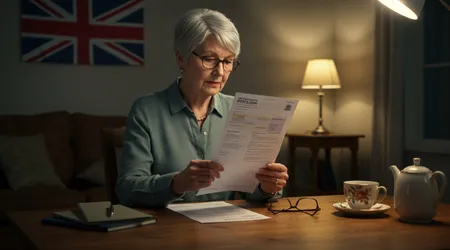State Pension in the UK: How Does It Work?

The state pension in the UK is a cornerstone of retirement planning, yet its complexities often leave people puzzled.
It’s the government’s promise to provide financial support to those who’ve contributed to the system during their working lives.
But how does it actually function in 2025, and why does it matter?
This lifeline ensures millions can afford essentials after retiring, but navigating its rules feels like decoding a cryptic puzzle.
With recent changes, including a 4.1% rise in April 2025, understanding its mechanics is more crucial than ever.
This guide unravels the state pension in the UK, offering clarity on eligibility, payments, and strategies to maximize your entitlement.
Think of it as a roadmap to secure your financial future because who doesn’t want a comfortable retirement?
Retirement isn’t just about kicking back; it’s about financial security. The state pension in the UK acts as a safety net, but it’s not a one-size-fits-all solution.
Its structure reflects years of policy tweaks, balancing fairness with fiscal sustainability. In 2025, the system faces scrutiny as an ageing population strains public finances.
Yet, the triple lock guarantee ensuring pensions rise by the highest of inflation, wage growth, or 2.5% remains a political hot potato.
This article dives deep, offering practical insights and real-world examples to help you grasp how the pension works and what steps you can take to optimize it.
What Is the State Pension in the UK?
At its core, the state pension in the UK is a government-funded income for retirees, based on National Insurance (NI) contributions. It’s not a gift; you earn it through years of work or credits.
The system splits into two tiers: the new state pension for those reaching pension age after April 2016, and the basic state pension for earlier retirees.
In 2025, the full new state pension pays £230.25 weekly, a lifeline for many. But not everyone gets the full amount your NI record dictates your slice of the pie.
Eligibility hinges on your NI contributions, typically requiring 35 years for the full new pension. Fewer years? You’ll get a reduced amount, provided you have at least 10 years.
++ Jobseeker’s Allowance in 2025: Eligibility and Payment Rates
The system rewards consistency but penalizes gaps, like time spent abroad or unemployed without credits.
It’s like building a house: each year of contributions adds a brick, but miss too many, and your structure wobbles. Understanding this foundation is key to planning your retirement.
The state pension in the UK isn’t static it evolves with policy changes. The triple lock, for instance, ensures annual increases, but debates rage over its affordability.
With rising life expectancy, the government balances generosity with sustainability. Knowing these dynamics helps you anticipate future shifts and plan accordingly.

How Do You Qualify for the State Pension?
Qualifying for the state pension in the UK requires a minimum of 10 years of NI contributions or credits. For the full amount, aim for 35 years.
Contributions come from employment, self-employment, or voluntary payments. Credits, however, can bridge gaps think carers, parents, or those on certain benefits. Check your NI record on GOV.UK to spot gaps early.
Consider Jane, a 55-year-old teacher who took a career break to raise children. She earned NI credits during those years, safeguarding her pension.
Also read: How to Make the Most of Workplace Benefits and Pensions in the UK
Conversely, Tom, a self-employed builder, missed voluntary contributions, reducing his entitlement. These examples show why proactive planning matters. Have you checked your NI record lately?
Gaps in your record aren’t a death sentence. You can pay voluntary Class 3 contributions to fill them, but deadlines apply usually six years back.
In 2025, addressing gaps early is critical, as costs rise over time. Use the state pension forecast tool on GOV.UK to see where you stand and act before it’s too late.
How Much Can You Expect to Receive?
The full new state pension in the UK in 2025 is £230.25 per week, or £11,973 annually, up 4.1% due to wage growth.
But your payout depends on your NI years. Fewer than 35 years? Your pension shrinks proportionally. A 2023 IFS report notes that 20% of pensioners receive less than the full amount due to incomplete records.
| NI Years | Weekly Pension (2025) | Annual Pension |
|---|---|---|
| 35+ | £230.25 | £11,973 |
| 30 | £197.36 | £10,262 |
| 20 | £131.57 | £6,841 |
| 10 | £65.79 | £3,421 |
Additional pensions, like SERPS, may boost your income if you worked before 2016. Deferring your pension can also increase payments by about 5.8% per year delayed.
But for many, £11,973 barely covers basics. The Retirement Living Standards suggest £14,400 for a minimum lifestyle, highlighting the pension’s limits.
Take Sarah, who deferred her pension for two years, boosting her weekly payment to £243.60. She planned around this, supplementing with savings.
Meanwhile, costs like energy bills eat into fixed pensions. Exploring top-ups or credits can make a tangible difference to your income.
The Triple Lock: Boon or Burden?
The triple lock ensures the state pension in the UK rises annually by the highest of inflation, wage growth, or 2.5%. In 2025, a 4.1% increase reflects wage growth.
This mechanism protects pensioners’ purchasing power, but critics argue it’s unsustainable. The IFS warns that by 2030, pension costs could strain public finances further.
Supporters see it as a lifeline, shielding retirees from rising costs. Without it, inflation could erode pension value, like water wearing down a rock.
Yet, political debates hint at reforms perhaps a double lock. Pensioners like John, reliant on the full pension, worry about potential cuts impacting their budget.
The triple lock’s future isn’t guaranteed. Discussions in 2025 suggest tweaks to balance fairness and affordability.
Staying informed about policy shifts is vital, as changes could reshape your retirement plans. Engaging with pension forecasts now can help you prepare for uncertainty.
Maximizing Your State Pension
Boosting your state pension in the UK starts with auditing your NI record. Gaps can be filled with voluntary contributions Class 3 costs about £15.85 weekly in 2025.
Carers or unemployed individuals may qualify for free credits. Check eligibility on GOV.UK to avoid missing out.
Deferring your pension is another tactic. Each year of delay increases payments by 5.8%. For example, Michael deferred for three years, raising his weekly pension to £250.10.
But this strategy suits those with other income sources, as you’ll need to cover costs during deferral.
Pension Credit can supplement low incomes, topping up to £227.10 weekly for singles. About 1.4 million pensioners claim it, per DWP data, yet many eligible don’t apply.
Combining these strategies credits, deferral, or top-ups can significantly enhance your retirement income.
Challenges and Future Outlook

The state pension in the UK faces mounting pressure. An ageing population means more claimants, with the OBR projecting a 25% rise in pension costs by 2050.
The state pension age, now 66, will hit 67 by 2028 and possibly 68 by 2035. These shifts challenge younger workers planning retirement.
Policy uncertainty adds complexity. The triple lock’s cost sparks debates, with some MPs pushing for reform. Pensioners like Mary,
who budgeted based on current rules, fear reduced future increases. Staying proactive checking forecasts and filling NI gaps helps mitigate risks.
Emerging tools, like pension dashboards, promise to simplify planning by 2026. These platforms will show all your pensions in one place, empowering better decisions.
As the system evolves, adapting to changes ensures you’re not caught off guard in retirement.
Why It Matters and What’s Next
The state pension in the UK isn’t just a payment it’s a lifeline shaping how millions live post-retirement. Its rules, from NI contributions to the triple lock, demand attention to secure your future.
With £11,973 annually, it’s a start, but often not enough. Why settle for less when you can act now?
Start by checking your NI record on GOV.UK. Explore credits, voluntary contributions, or deferral to boost your pension.
Stay informed about policy shifts, as 2025 brings debates on sustainability. The pension system is like a garden nurture it early for a fruitful retirement.
This isn’t just about money; it’s about peace of mind. Whether you’re 30 or 60, understanding the state pension in the UK empowers you to plan smarter.
Take Jane, who secured her full pension through credits, or Michael, who deferred for extra income.
Their stories show action pays off. Visit GOV.UK today, check your forecast, and take control of your retirement destiny.
Frequently Asked Questions
Q: How do I check my state pension entitlement?
A: Visit GOV.UK’s “Check your State Pension forecast” page. Enter your NI number for a personalized estimate. It’s quick, secure, and free.
Q: Can I claim Pension Credit if I don’t get the full pension?
A: Yes, if your income is below £227.10 weekly (single) or £346.60 (couple). Apply via GOV.UK to boost your income.
Q: What happens if I have gaps in my NI record?
A: Gaps reduce your pension. Pay voluntary Class 3 contributions (£15.85/week) to fill them, or check if you qualify for free credits.
Q: Is deferring my pension worth it?
A: Deferring increases payments by 5.8% per year. It suits those with other income but may not benefit everyone. Assess your finances first.
Q: Will the triple lock stay in 2025?
A: The government committed to the triple lock for 2025, but future reforms are debated. Monitor policy updates to stay prepared.
